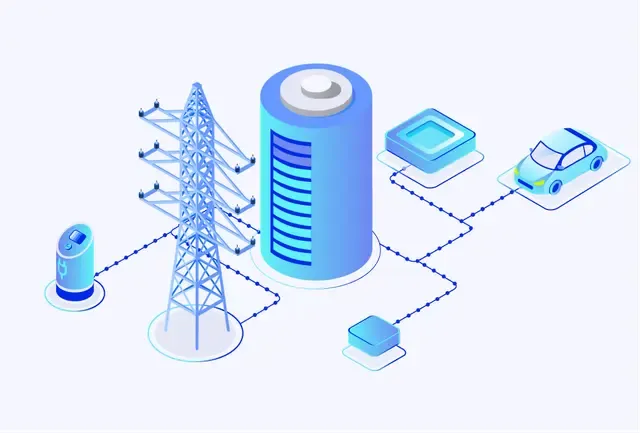As the adoption of electric vehicles (EVs) continues to rise, efficient energy distribution and smart charging solutions are becoming essential. The Open Smart Charging Protocol (OSCP) plays a crucial role in balancing electricity supply and demand across the charging network. Designed as an open standard, OSCP facilitates seamless communication between charge point operators, distribution system operators (DSOs), and energy management systems.
This article explores the key features of OSCP, its evolution, and how it enables intelligent energy management in EV charging infrastructure.
The Open Smart Charging Protocol (OSCP) is an open communication standard designed to optimize electricity distribution in EV charging networks. It enables forecasting and regulation of power consumption, ensuring a stable and efficient energy supply. The protocol allows site owners or DSOs to share a 24-hour forecast of available grid capacity with charge point operators, enabling them to adjust EV charging schedules accordingly.
Hosted by the Open Charge Alliance (OCA), OSCP provides a structured framework for integrating EV charging stations into broader energy management systems. By aligning charging activities with real-time grid capacity, the protocol enhances grid stability, prevents overload, and promotes cost-effective electricity usage.

OSCP has undergone significant improvements since its inception:
OSCP 1.0 (2015): The first version introduced a standardized method for smart charging, enabling DSOs to communicate energy availability to charge point operators. This version focused primarily on EV charging coordination.
OSCP 2.0 (2020): The updated version broadened its scope beyond smart EV charging, integrating electric vehicles into a more diverse energy ecosystem. The revised terminology and functionalities support wider energy management applications, acknowledging the evolving role of EVs in future energy networks.
OSCP 2.0 is designed around a structured domain model that defines the roles and interactions of various stakeholders within the energy network. The key components include:
A device that consumes or generates electricity in a controllable manner. This includes EVs, battery storage systems, and heat pumps. These resources provide flexibility by adjusting their energy consumption or production based on available grid capacity.
A unit responsible for managing flexibility resources. Typically, charge point operators (CPOs) play this role, ensuring EVs charge within the specified energy constraints. OSCP does not dictate the control mechanisms but facilitates communication between stakeholders.
A unit that oversees the energy network, such as a DSO or an Energy Management System (EMS). Capacity providers set energy limits for flexibility providers but do not directly control the charging or energy-consuming devices.
The protocol ensures that energy distribution remains within the network's safe operational limits. The flexibility provider aligns charging schedules with the capacity provider’s forecast, thereby optimizing power distribution and avoiding grid congestion.
The Open Smart Charging Protocol (OSCP) is a critical tool for charge point operators, enabling dynamic management of power loads across networks of electric vehicle (EV) charging stations. By leveraging real-time data such as grid capacity, electricity rates, and demand patterns, OSCP allows operators to optimize charging schedules and speeds. For instance, during peak demand periods, charging can be scaled back to prevent grid overload, while during times of surplus energy, charging can be accelerated to maximize efficiency.
OSCP’s flexibility lies in its ability to adjust charging profiles based on a 24-hour forecast of grid capacity. This foresight enables operators to anticipate fluctuations in power availability and demand, ensuring a balanced and stable grid. By proactively managing energy distribution, OSCP helps prevent grid strain, supports sustainable energy usage, and meets the needs of EV users effectively. Ultimately, OSCP enhances the integration of EV charging infrastructure with the power grid, promoting resource optimization and grid stability while delivering a seamless charging experience.
Implementing OSCP within EV charging infrastructure provides several advantages:
By predicting available capacity and adjusting charging loads accordingly, OSCP helps prevent grid overload and enhances power system reliability.
The protocol ensures that energy distribution remains efficient, reducing unnecessary power consumption and aligning charging activities with renewable energy availability.
By leveraging demand forecasts, charge point operators can optimize charging schedules to take advantage of lower electricity rates, reducing operational costs for both consumers and service providers.
OSCP’s open standard allows seamless integration with various energy management systems, making it a future-proof solution for expanding EV infrastructure.
The protocol provides a standardized method for exchanging capacity information, fostering better coordination between DSOs, charge point operators, and energy service providers.
As the global shift toward electrification accelerates, smart charging solutions will become increasingly vital. OSCP is poised to play a pivotal role in shaping the future of EV charging by enabling:
OSCP can facilitate bidirectional energy flows, allowing EVs to supply power back to the grid during peak demand periods.
By aligning EV charging with renewable energy generation, OSCP enhances sustainability and reduces dependency on fossil fuels.
Future iterations of OSCP may incorporate artificial intelligence and machine learning to improve energy demand predictions and optimize grid performance.
The Open Smart Charging Protocol (OSCP) provides a robust framework for efficient energy distribution in EV charging networks. By fostering real-time communication between DSOs, charge point operators, and energy management systems, OSCP ensures that EV charging remains sustainable, cost-effective, and grid-friendly.
With the continuous evolution of smart charging technologies, OSCP is set to become a cornerstone of intelligent energy management in the era of electric mobility. As adoption grows, its impact on energy efficiency and grid stability will further solidify its importance in the future of EV charging infrastructure.